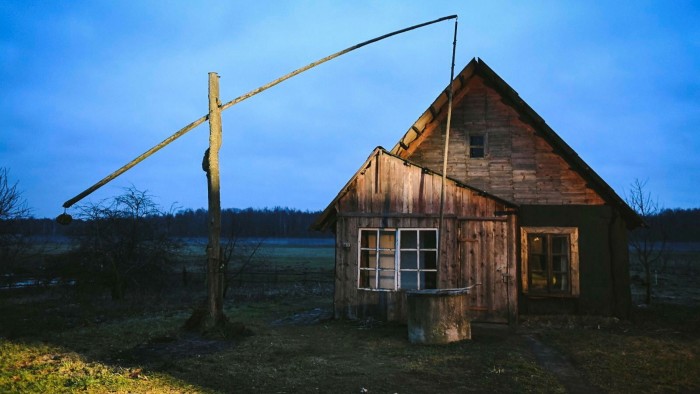Unlock the Editor’s Digest for free
Roula Khalaf, Editor of the FT, selects her favourite stories in this weekly newsletter.
Germany, ‘Stresstest’
As climate change raises temperatures to intolerable levels, how can cities adapt to become resilient to extreme heat? Curators of the German pavilion have created a sensory experience that addresses this urgent question. Their aptly titled Stresstest seeks to raise awareness by first immersing visitors in uncomfortably warm conditions. A second, more accommodating setting then presents architectural solutions to these challenges. The stakes couldn’t be higher — a recent study warned that global warming could lead to an additional 2.3mn temperature-related deaths in European cities by 2099.
stresstest.world/de
Latvia, ‘Landscape of Defence’
Latvia’s pavilion focuses on another existential threat: war. A recent push to fortify the country’s border with Russia in the event of an invasion has prompted curators Liene Jākobsone and Ilka Ruby and architecture firms Sampling and Nomad to consider how geopolitical conflict shapes the environment. Landscape of Defence looks at the effects of defence architecture such as fences and anti-tank trenches, highlighting not only the physical impact of these structures on areas already vulnerable to attack, but also “the emotional impact on its population”. The curators say the broader aim is to encourage military strategists to take civilian perspectives into account in their national defence planning.
latvianpavilion.lv
Iceland, ‘Lavaforming’
Flowing lava might conjure visions of disaster and destruction, but what if molten rock could actually be used to forge new cities? Taking inspiration from the lava fields of Iceland, mother-and-son team Arnhildur Pálmadóttir and Arnar Skarphéðinsson of s.ap architects have imagined a speculative future set in 2150 where humans have harnessed the power of lava to create sustainable building material. According to Pálmadóttir, a lava flow “can contain enough building material for the foundations of an entire city to rise in a matter of weeks without harmful mining and non-renewable energy generation”.
honnunarmidstod.is

Qatar, ‘Beyti Beytak. My home is your home. La mia casa è la tua casa’
It was recently announced that Qatar’s pavilion in the Giardini — the first permanent structure to be added to the historic venue in almost three decades — will be designed by the Beirut-born, Paris-based architect Lina Ghotmeh. As its multilingual title suggests, the inaugural presentation explores how hospitality and traditions of welcome are translated throughout the architecture of the Middle East, North Africa and South Asia. It includes more than 20 architects, bringing modernist pioneers such as Sri Lanka’s Minnette de Silva into dialogue with Islamic architecture specialists such as Egypt’s Abdel-Wahed El-Wakil. Among the contemporary innovators is Dhaka-based Marina Tabassum, who won the Soane medal in 2021 and has gained international recognition for the temporary homes she designed to help Bangladesh’s flood victims in recent years.
qm.org.qa

Luxembourg, ‘Sonic Investigations’
Architects Valentin Bansac and Mike Fritsch and architect and cartographer Alice Loumeau shift our focus from the visual to the auditory in Sonic Investigations. Inspired by John Cage’s seminal composition 4’33’’, their project invites visitors to engage in the act of “deep listening” to consider how hidden forces shape our built and natural environments. At its core is a commissioned work by sound artist Ludwig Berger, who has collected field recordings from different locations around Luxembourg. Ultimately the presentation seeks to reveal the joy of discovery when we pause and tune into our surroundings.
kulturlx.lu

Find out about our latest stories first — follow FT Weekend on Instagram and X, and sign up to receive the FT Weekend newsletter every Saturday morning

Leave a Reply